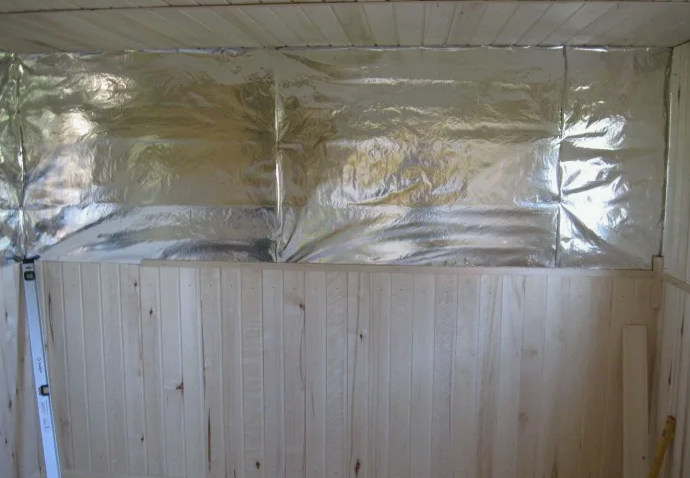Indoor air quality plays a crucial role in maintaining a healthy and comfortable home environment. Many homeowners focus on air purifiers, HVAC systems, and ventilation, but one often overlooked factor is the crawl space beneath the house. Crawl spaces can be a hidden source of moisture, mold, and contaminants that affect the air inside your home.
Crawl space encapsulation is an effective solution that helps protect your home from these issues while significantly improving indoor air quality. This article explores how encapsulating your crawl space can lead to a cleaner, healthier, and more energy-efficient home.
Understanding Crawl Space Encapsulation
Crawl space encapsulation is the process of sealing your crawl space with a heavy-duty moisture barrier, insulation, and sometimes a dehumidifier to regulate humidity. This prevents outside air, moisture, and pests from entering the space. The goal is to create a controlled environment that keeps your home’s foundation dry and free from pollutants.
The Steps of Crawl Space Encapsulation
- Cleaning and Inspection: Before sealing the crawl space, professionals remove debris, mold, and pests.
- Sealing Vents and Cracks: Any openings or cracks in the foundation are sealed to prevent moisture and air infiltration.
- Installing a Vapor Barrier: A thick plastic liner is placed on the floor and walls to block moisture.
- Adding Insulation: Foam board or spray foam insulation helps regulate temperature and energy efficiency.
- Dehumidification: A dehumidifier may be installed to maintain optimal humidity levels.
Now, let’s dive into how this process directly benefits indoor air quality.
How Crawl Space Encapsulation Improves Indoor Air Quality
1. Reduces Mold and Mildew Growth
One of the biggest threats to indoor air quality is mold and mildew. Crawl spaces are naturally humid environments, providing the perfect breeding ground for mold spores. When mold grows in an unsealed crawl space, spores can easily spread into the air inside your home, causing respiratory issues, allergies, and unpleasant odors.
Encapsulation blocks moisture, preventing mold growth and keeping your home’s air clean and healthy.
2. Eliminates Musty Odors
Have you ever noticed a musty smell in your home, especially after rain? That odor often originates from a damp crawl space. Moisture buildup leads to bacteria and mold, which release foul-smelling compounds into the air.
Sealing your crawl space eliminates moisture, reducing unpleasant odors and making your home smell fresh.
3. Prevents Pest Infestations
Rodents, termites, and insects thrive in damp, dark crawl spaces. These pests not only damage your home but also leave behind waste and allergens that can get into your air supply.
By encapsulating the crawl space, you remove their access points and create an environment where they can’t survive, improving your home’s air quality.
4. Reduces Indoor Humidity Levels
Excess moisture in a crawl space can raise humidity levels inside your home, making it feel stuffy and uncomfortable. High humidity can also lead to dust mites, mould growth, and increased allergens.
Crawl space encapsulation helps maintain balanced humidity levels, reducing allergens and improving indoor comfort.
5. Improves HVAC Efficiency and Filtration
When crawl spaces are left unsealed, they allow unfiltered outside air to mix with your home’s conditioned air. This forces your HVAC system to work harder, reducing efficiency and circulating pollutants.
Encapsulation prevents outside air from entering your home, allowing your HVAC system to function more efficiently. This also helps your air filters trap fewer contaminants, leading to cleaner indoor air.
6. Prevents Carbon Monoxide Infiltration
If your home has gas-powered appliances, carbon monoxide (CO) leaks can be a serious risk. Crawl spaces with poor ventilation can trap CO gases, which can then seep into your home’s living areas.
By sealing the crawl space and improving airflow, encapsulation helps prevent dangerous gases from accumulating in your home.
7. Reduces Dust and Allergens
Unsealed crawl spaces allow dust, pollen, and outdoor pollutants to enter your home. Over time, these particles can worsen allergies, asthma, and other respiratory conditions.
By sealing off the crawl space, encapsulation keeps dust and allergens outside, making your home a healthier place to live.
Additional Benefits of Crawl Space Encapsulation
While indoor air quality is one of the most important benefits, encapsulation also provides:
- Lower energy bills: Reduced air leakage means your HVAC system runs more efficiently.
- Stronger home foundation: Moisture control helps prevent wood rot and structural damage.
- Increased home value: A sealed crawl space is a valuable selling point for potential buyers.
FAQs
1. How long does crawl space encapsulation last?
A properly installed encapsulation system can last 20 years or more with minimal maintenance. Regular inspections ensure it remains in good condition.
2. Is crawl space encapsulation worth the cost?
Yes! While the upfront cost may seem high, encapsulation reduces energy bills, prevents costly repairs, and improves indoor air quality, making it a worthwhile investment.
3. Can I encapsulate my crawl space myself?
While DIY kits are available, professional installation is recommended. Experts ensure proper sealing, insulation, and moisture control for long-lasting results.
Final Thoughts
Crawl space encapsulation is a smart investment for homeowners looking to improve indoor air quality, reduce allergens, and maintain a healthy living environment. By keeping moisture, mold, and pests out, encapsulation creates a cleaner, more efficient home while protecting your family’s health.
If you’ve been dealing with musty odors, high humidity, or allergy symptoms, it may be time to consider encapsulating your crawl space. A professional assessment can help determine the best solution for your home’s needs.

